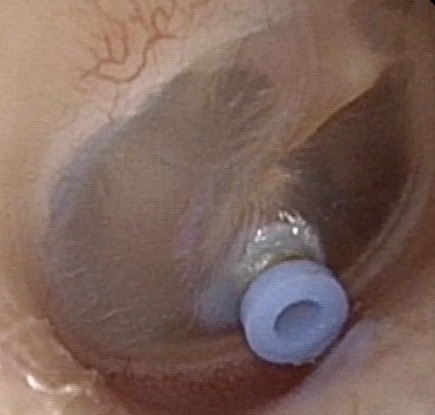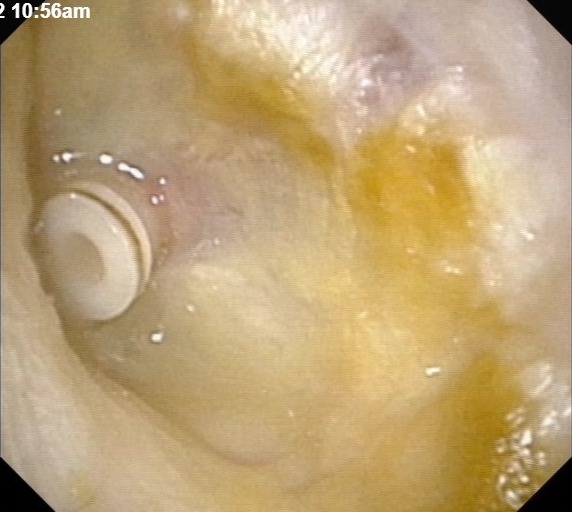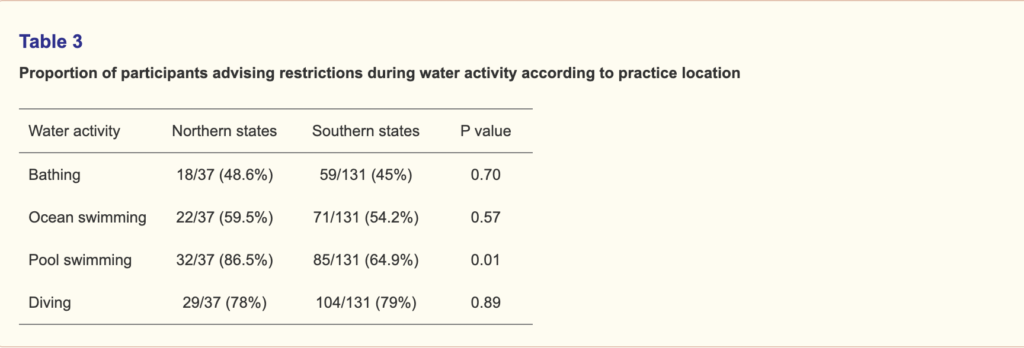Should water precautions be taken in children with grommets (ear ventilation tubes)?
Grommets or ventilation tubes are small tubes that are inserted into the eardrum to “ventilate” the middle ear. These are placed to stop recurrent middle ear infections or to treat a condition called “glue ear” or otitis media with effusion. Grommet insertion is more commonly performed in children who are more likely to suffer from middle ear infections and glue ear. Rarely, adults may require them too. The grommets typically stay in for up to 12 months and then fall out on their own.
Grommets are technically foreign bodies and can therefore easily get infected following exposure to contaminated water. Infected grommets cause a copious discharge of purulent foul-smelling fluid from the ear. Often the skin of the ear canal can get secondarily infected. Early intervention with antibiotics ear drops often resolves the infection. It is important to use antibiotic ear drops that do not cause harm to the inner ear (i.e. non-ototoxic). The safest antibiotic ear drops are the quinolones such as ciprofloxacin ear drops.
Chronic infections can cause dead moist skin to accumulate in the ear canal together with granulations around the grommet. This requires specialist attention. Suction clearance of the dead moist skin in the ear canal will ensure the resolution of the infection and prevent a recurrence.
How common are grommet infections?
Grommet infections are fairly common. In Australia, 9% of patients who have grommets inserted developed ear discharge in the first 6 weeks. Worldwide, it is estimated that up to 80% of patients who have grommets will have at least one episode of ear discharge in the lifetime of their grommets. The frequency of these infections is low with one trial showing one episode of ear discharge every 14 months.
The true incidence and frequency of grommet infections in Singapore are not known but it is postulated that the humid weather and higher rates of swimming are likely to cause a higher rate of infections.
To swim or not to swim?
It is accepted that water exposure increases the risk of grommet infections. So after grommets are inserted surgeons are frequently asked these questions:
- Can my child get his ears wet in the bath?
- Can my child swim and submerge his head under the water?
- Can my child dive to the bottom of the pool?
- Can my child swim in the sea?
There are sound reasons why the advice may vary based on the different situations in which grommets are exposed to water. Soapy water in the bath can penetrate a grommet easier than normal distilled water due to the reduced surface tension. Diving increased the external water pressure and may allow water through a grommet more readily. Finally, pool water is likely to be more contaminated than seawater.
Hence in a survey of ENT specialists or Otolaryngologists in Australia published only last month the advice on water exposure varied significantly. The respondents were divided according to “Northern” states which are more tropical and “Southern” states.
Is there any evidence to support water precautions in children with grommets?
In 2013, the American Academy of Otolaryngology-Head and Neck Surgery (AAOHNS) published guidelines on tympanostomy tubes (or grommets) in children. The guidelines explicitly recommend against routine water precautions following grommet insertion. Similarly in 2016, a Cochrane review in the UK arrived at similar conclusions. The data studied showed that the routine use of earplugs for swimming after grommet insertion reduces the incidence of ear discharge by one episode for 2.8 years of earplug use. This was a statistically significant difference but deemed to be inconvenient and not cost-effective.
More recent studies have shown a slight increase in ear discharge in the first month following grommet insertion and have formed the basis for advising water precautions in the first month.
What do I do?
In the absence of local data to help me make a decision, one has to draw on personal experience. The humid weather in Singapore and the love of swimming amongst children (the so-called Joseph Schooling effect!), do imply that grommet infections are probably more common than we realise. Not all cases will come to a specialist’s attention. Grommet infections are generally painless but inconvenient when pus pours profusely from an ear.
Wearing earplugs is not an easy task for young children. Swimming often occurs in school and parents are not there to help children put them on.
So one’s advice must take evidence, local circumstances, a child’s wishes, and parental concerns into consideration!
So here is my advice!
- Observe strict water precautions for 2-4 weeks after grommet insertion i.e. cotton balls in the ears when they bathe and no swimming or diving
- Permit bathing and swimming (with head submerged) after this initial period but do not dive beyond 2 metres
- Consider using a hairdryer to dry the ear canals (and hair) after a swim
- Treat infection (discharging ears) early – in some patients, a bottle of ciprofloxacin drops may be handy for that trip to Phuket or Bali!
- In children with recurrent infections, consider a custom-made swimming mould
Share this blog via:










